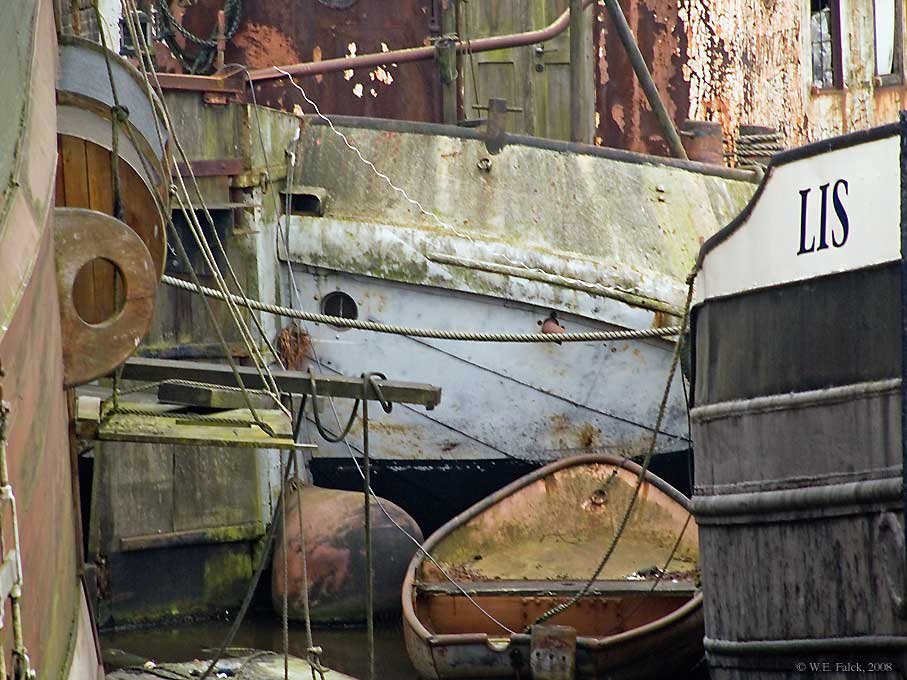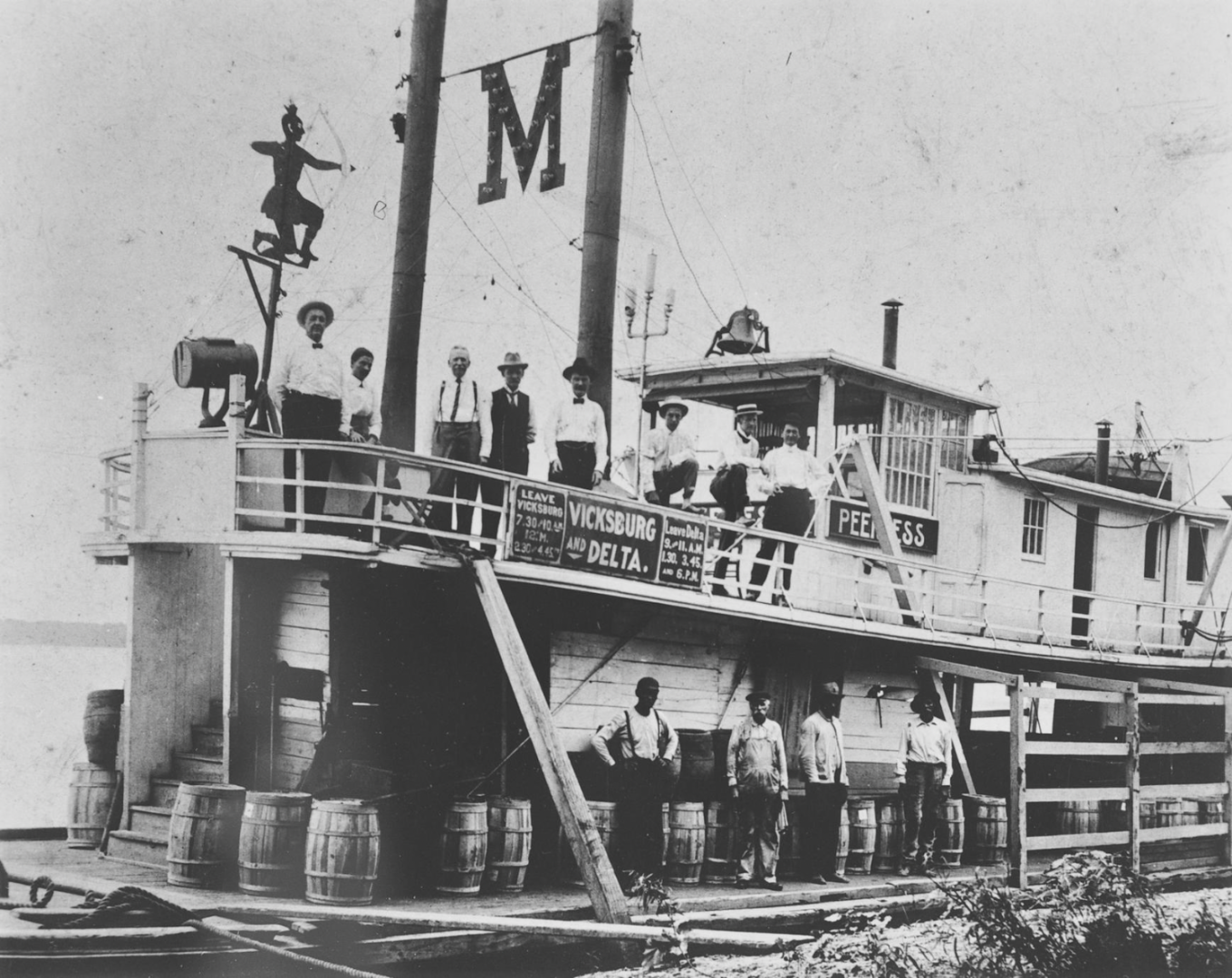-
Posts
6,546 -
Joined
-
Last visited
Content Type
Profiles
Forums
Gallery
Events
Everything posted by wefalck
-
I like your inquisitiveness to the set the context right, talking about the paper on Mexican anthropometrics ...
- 286 replies
-
Sorry, I am a bit late to the discussion, as I have been travelling. Of course, I don't know what they really did, but if it was me, I would have put floor-panels across the boat. If there is a finger-hole provided, they could be lifted one by one for access to the bilge and bailing. My grandfather owned (but mainly used by me ) a flat-bottomed rowing-boat on Lake Constance (Germany). The bottom had a slight rocker and at the lowest point a narrow panel in the floor could be lifted out for bailing. The bailer was a shovel-like implement with a short handle. The floors had longitudinal planks grouped into panels between the benches for easy removal to clean the bilge. On the question of the 'box': many small boats had a small locker (that could be perhaps locked with a pad-lock) in the peak or the stern in which the boat's small accessories, such as the bailer, or personal items could be stored.
- 286 replies
-
I think one should make a distinction between 'weathering' and painting to achieve a weathered look. The former tem is applied by various modelling communities to a variety of techniques using materials other than paints applied after the main paint-job to achieve an (ab)used, chipped, worn and weathered look. However, weathered wood planking on ships' decks can be achieved by using different transparent layers ('washes') of paint only - very much as the painters of old have done. There is, of course, a gray-zone between the two approaches.
-
I just use two staple-like clamps made from springy steel wire.
-

HMCSS Victoria 1855 by BANYAN - 1:72
wefalck replied to BANYAN's topic in - Build logs for subjects built 1851 - 1900
I gather I should finally get a resistance soldering kit ...- 993 replies
-
- gun dispatch vessel
- victoria
-
(and 2 more)
Tagged with:
-
Engineering textbooks on seagoing ships from around the 1860s onwards usually show double-walled stacks. If there were several boilers, the outer pipe would enclose the smoke pipes of up to four boilers. I gather these river craft were constructed as simple and cheaply as possible. The draft then was ensured by the very high stacks. A bit off the actual topic, but as smoke stacks became very hot, the stacks could not be painted directly in the colours of the line, the paints of the day would not survive the heat. Therefore, a separate sleeve for that was often attached with some distance from the actual stack.
- 393 replies
-
Were these stacks simple pipes ? At that time double-walled stacks were common, as they improved the draft (because they stayed hot inside) and reduced the fire-hazard to adjacent supersctructures.
- 393 replies
-

HMCSS Victoria 1855 by BANYAN - 1:72
wefalck replied to BANYAN's topic in - Build logs for subjects built 1851 - 1900
At 1:72 scale perhaps I would brush over the fact that the sheaves were in slots of these battens and just set them into notches.- 993 replies
-
- gun dispatch vessel
- victoria
-
(and 2 more)
Tagged with:
-
Apologies, Eric, for not looking/reading carefully ... What actually puzzled me on this photo with all the ladies on the boiler deck is that they are all rather precariously perched there with no rails around the deck. I am aware that risk awareness dramatically changed over the centuries, but when the boat is moving, the boiler deck may have not been a very stable and safe place. Perhaps the ladies and others just posed there for the picture, but would not normally be admitted there - hence, some simple ladder or the like for the crew may have been sufficient at the time of this picture.
- 393 replies
-
Aren't there stairs going right up the front of the deckhouse, under the searchlight and between the barrels?
- 393 replies
-
On lateen-rigged boats the halyard usually serves also as a back-stay, sometimes the only one. Given the moderate performance expectation of these 'canoas' By the same token, on lateen-rigs the sails are still fixed to the yard using short lashings, not continuous ones as on more 'modern' rigs. On such 'artisanal' boats, belaying points where typical chosen wherever convient at the moment.
- 286 replies
-
Learning about another piece of local nautical history - I don't mind these accounts of research at all. In fact, I think this is a very laudable undertaking 👍. It deserves to written up properly somehow. It could go eventually into the Journal of Nautical Archeology, I think. You should at at least make a PDF from it (an for your other Mexican boat as well)! I would be quite curious about the design history of these boats and where possible influences came from. Flat bottomed-designs are quite frequent all over Europe, but this combination of flat, broad transom and rather more elegant bow, probably has some (forgotten) functional reason. For instance, net-fishing over the stern would require a reasonably stable platform and sufficient buoyancy. The high bows could help parting the reeds in the swampy areas ... Given that the main colonial influences would probably be Iberian, the origin of Spanish who came to the region of the lake could be interesting, as they may have brought with them local building traditions. For instance, I am currently just at the edge of a major flat-bottom boat area in Spain, the Albufera lagoon south of Valencia. However, the boats here are virtually all double-ended and have no flat transom. One may need to look around a bit in Spain, but literature on such local craft is equally scarce. One would need some more photographs (if available) on how the thatching was done, but British railway modellers may have some ideas for its representation, as they often depict thatched cottages on their layouts. Some approaches may be more approximatives, but other are more detailed. At 1:32, one could almost go for the real thing.
- 286 replies
-
Very nice project, of which I have not been aware of before! I suppose her name refers to the port of Mahón on Menorca, rather than to mayonnaise 😉 Regards from Valencia too ...
-

Harriet McGregor by Boccherini
wefalck replied to Boccherini's topic in - Build logs for subjects built 1851 - 1900
Looking good after those challenges !
About us
Modelshipworld - Advancing Ship Modeling through Research
SSL Secured
Your security is important for us so this Website is SSL-Secured
NRG Mailing Address
Nautical Research Guild
237 South Lincoln Street
Westmont IL, 60559-1917
Model Ship World ® and the MSW logo are Registered Trademarks, and belong to the Nautical Research Guild (United States Patent and Trademark Office: No. 6,929,264 & No. 6,929,274, registered Dec. 20, 2022)
Helpful Links
About the NRG
If you enjoy building ship models that are historically accurate as well as beautiful, then The Nautical Research Guild (NRG) is just right for you.
The Guild is a non-profit educational organization whose mission is to “Advance Ship Modeling Through Research”. We provide support to our members in their efforts to raise the quality of their model ships.
The Nautical Research Guild has published our world-renowned quarterly magazine, The Nautical Research Journal, since 1955. The pages of the Journal are full of articles by accomplished ship modelers who show you how they create those exquisite details on their models, and by maritime historians who show you the correct details to build. The Journal is available in both print and digital editions. Go to the NRG web site (www.thenrg.org) to download a complimentary digital copy of the Journal. The NRG also publishes plan sets, books and compilations of back issues of the Journal and the former Ships in Scale and Model Ship Builder magazines.





